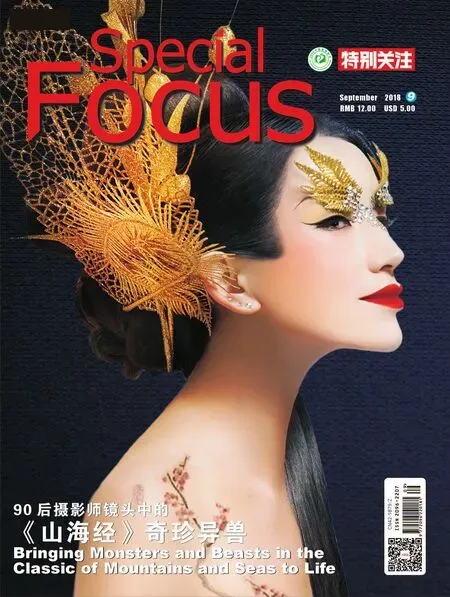Understanding Chinese Characters:妈
By William Christopher Furr [USA]
Studying Chinese characters can be difficult,especially when we try to memorize characters without understanding the ‘why’ behind the way the characters are written. If you think about the ‘why’ behind Chinese characters, it can help you remember the characters more easily because it makes studying more interesting. For instance, how much do you really understand the logic behind the character妈(mā, meaning “mother”)?
The pictographic character 女 (nǚ) has been a frequently used Chinese character and Chinese radical (Chinese character component) for several thousand years. In Mandarin Chinese, it is used in many frequently occurring words, such as女儿 (nǚér,daughter), 妇 女 (fùnǚ, woman), and 女 士 (nǚshì,lady). According to modern scholarly analysis, the character 女 (nǚ) is a pictographic representation of a kneeling woman, hands crossed at the wrists,and facing downwards. The cultural significance of a kneeling woman was that the woman was soon to be married or was gentle and agreeable.
The pictographic character马 (mǎ) is another Chinese character and Chinese radical (Chinese character component) which has been frequently used in the last several millennia. In Mandarin Chinese, it is used in the words 马上 (mǎshàng, soon)and 马 虎 (mǎhu, careless). In ancient times, this character looked like a horse with its legs facing to the left and head facing upwards. In 1964, to increase the speed with which Chinese could be learned, the traditional form 馬 (mǎ), which is made up of nine strokes, was simplified to马 (mǎ), which is made up of three strokes. Thefinal stroke written from left to right, which replaced the original four dots in the old form, represents the legs of a horse.
When we combine the two components into one character, we get the character 妈 (mā). The character 妈 (mā) is what can be referred to as a phono-semantic compound ( 形声字 , xíngshēngzì).Phono-semantic compounds are made up of two components: a meaning component (形 旁,xíngpáng) which tells us something about the meaning of the character, and a sound component(声 旁 , shēngpáng) which tells us something about the sound of the character.
The left-hand side of the character妈 (mā) uses the pictograph 女 (nǚ) as a meaning component to tell us that the meaning of妈 (mā) is related to “female.” The right-hand side of the character uses the character 马 (mǎ) to tell us that the pronunciation of妈 (mā) is related to the sound mǎ. Other characters which use 女 (nǚ) as a meaning component include the phono-semantic compound 姐 (jiě) in 姐 姐 (jiějie, elder sister) and the ideogrammic compound 好 (hǎo, good). Other characters that use马 (mǎ) as a sound component include the phono-semantic compound 蚂 (mǎ) in蚂蚁 (mǎyǐ, ant) and the phono-semantic compound骂 (mà, to scold). In some characters,女 (nǚ) can be used as a sound component like in the phonosemantic compound 努 (nǔ) used in 努力 (nǔlì, hard work). In many characters, 马 (mǎ) can be used as a meaning component, like in the phono-semantic compound 驾 (jià) used in 驾驶 (jiàshǐ, drive).
In the Analects of Confucius, Confucius is quoted as saying, “学而不思则罔 (Learning without thought is labor lost); 思而不学则殆 (thought without learning is perilous).” (Analects 2:15, James Legge Translation) You don’t need to understand everything all at once, but you if you really want to understand Chinese, character construction is one of the things you need to have a general understanding of.

